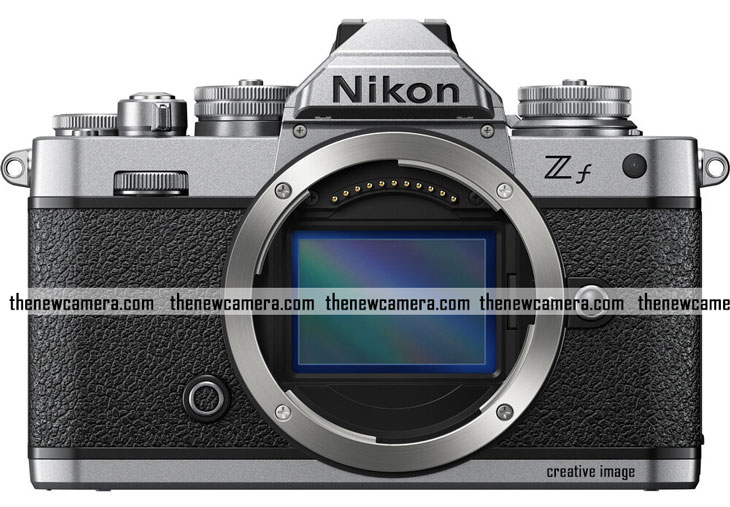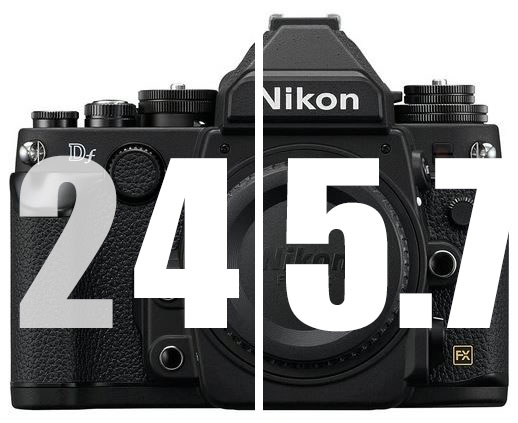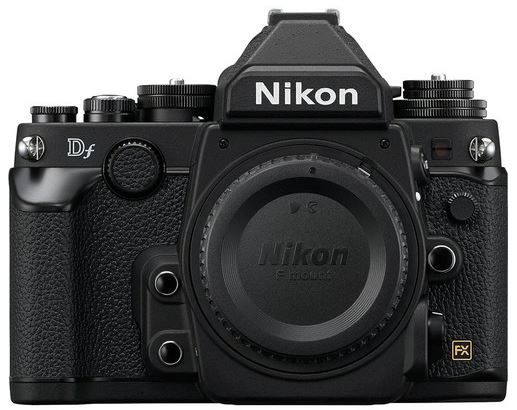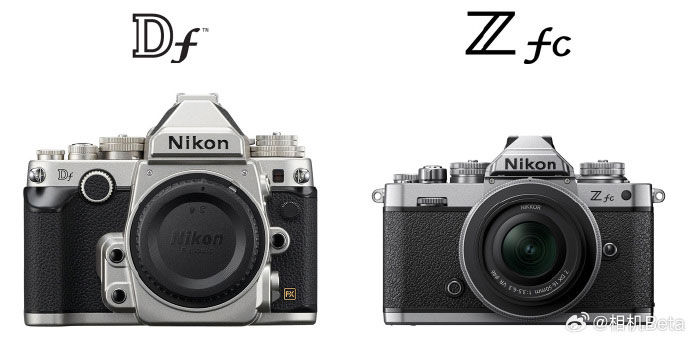Join More Than 50,000+ Subscribers and get latest camera news and rumors
NEW CAMERA VIDEOS ON YOUTUBE
Download Our Android App
|
By admin, on August 10th, 2023

Now we have the updated core specifications of the upcoming Nikon ZF camera. From the recent set of core specifications, it has been confirmed that the upcoming camera does feature, for the first time, a pixel shift high-resolution mode. The Nikon ZF will become the first Nikon camera to feature a pixel shift high-resolution mode, something that none of the previous Nikon cameras were able to do. Other features include s an option to add a microSD card slot and a normal SD card slot.
Nikon Zf Updated Core Specification
- Black camera body
- 24.4 MP BSI-CMOS sensor
- Weight: 700g (inc. battery, the Z5 is 590g, the Z6II is 615g )
- Dimensions: 144mm x 101mm
- Up to 30fps (JPG/HEIF)
- 4k 60 video
- USB C PD (fast-charging technology based on the USB-C standard)
- ISO 100-64,000 (for comparison the Z6II ISO range is 100-51,200)
- EN-EL15 battery
- The Z f logo is moved to the left (the Zfc has it on the right)
- Dual memory card slots (SD+MicroSD) – this is probably why the first reports came out with only one memory card slot, the second slot could
- be hidden and be used just like the internal memory on some cameras
- Pixel Shift: new high-res mode will be implemented for the first time in a Nikon mirrorless camera
- August-September announcement, shipment before the end of 2023
- Improved autofocus compared to Z5/Z6II
- A few different lens kits/bundles will be available in the $2,000-$2,500 price range
- Price for body only: $1,999
- One of the bundles will be with the Nikkor Z 40mm f/2 (SE) lens (no new lens will be introduced with the Zf)
- Very similar (but improved) design/layout from the Nikon Zfc
- Small LCD screen on top for aperture display
- New 3rd function on the sub lever of the shutter speed dial (besides photo/video) for B&W mode (B&W/Photo/Movie)
- Has a little grip/bump like the Nikon Df (see the mockup pictures)
- Better build quality compared to the Nikon Zfc
- Fully articulating screen
- Code name N2137
Explore Latest News about Nikon Zf Camera here
Follow us on our social pages FACEBOOK | TWITTER | INSTAGRAM to get live news + Nikon Rumors 24X7
Source NRwebsite
By admin, on August 9th, 2023

According to the latest set of rumors, the Nikon ZF camera features a high-resolution mode. At the moment, what we know about the high-resolution mode in Nikon is adding High-Res Zoom Mode in 4k 24p videos and not the traditional sensor shift IBIS-based HR Mode which was first introduced by Pentax K- 3II in APS-C DSLRs and is now most used by Sony Alpha cameras. Recently, Nikon updated the Z9 camera with a firmware 3.0 update, and furthermore, speed settings were added to HR mode in the 4.0 update, However, this is completely different from the higher resolution mode that we generally see in Sony cameras with a sensor-shift image stabilization system. So, we have to wait for further confirmation about this feature.
One more thing that rumor mills are talking about is the presence of dual card slots in the camera. This is not a new thing for us as we have already discussed it. We have been reported about different types of prototypes of the Nikon ZF camera – one that carries a higher resolution sensor with a single card slot and the other that we are discussing right now and is expected to be approved for the production line with a 25-megapixel CMOS sensor and dual card slots.
Follow us on our social pages FACEBOOK | TWITTER | INSTAGRAM to get live news + Nikon Rumors 24X7
Source NR.com
By admin, on August 2nd, 2023

A fresh rumor has started that the upcoming Nikon ZF camera may feature a 24-megapixel sensor from the Nikon Z6 Mark II camera and a dual card slot with extensive manual control, as seen in the Nikon DF DSLR camera.
Earlier, we published specs that said one of the prototypes of the camera uses a 45.7-megapixel sensor from the Z7 Mark II camera, as well as a single card slot.
It’s not new; before releasing a camera, companies test several prototypes. In fact, the 45.7-megapixel version is already being tried and tested by someone. But again, as per the rumor, we have a new set of cameras in the production line with a 24-megapixel sensor and dual card slot.
So there is a very clear indication that either the Nikon DF is coming with a 24-megapixel full-frame CMOS sensor or maybe a 45.7-megapixel sensor, or we will have a new generation of Z6 Mark III camera very soon, and these two different reports are coming for two different models.
So we have to wait for more confirmed information. As soon as we get any, I will update you very soon.
Follow us on our social pages FACEBOOK | TWITTER | INSTAGRAM to get live news
source nikonrumor
By admin, on July 30th, 2023

Yesterday, we reported to you that Nikon is expected to announce a new full-frame mirrorless camera in August or September 2023. Now, we have more confirmation of this, and the rumor mill has recently published an article with the core specs of the upcoming Nikon retro full-frame mirrorless camera, which could be a possible replacement for the Nikon DF and a bigger brother of the Nikon Zfc.
Take a look at the rumored set of specifications for the upcoming Nikon DF mirrorless camera.
Nikon ZF Mirrorless Specification
- 45MP sensor
- Improved autofocus compared to Z6II/Z7II
- Very similar to the Nikon Zfc in terms of design/layout
- small LCD screen on top for aperture display
- New 3rd function on the sub lever of the shutter speed dial (besides photo/video) for B&W mode
- Has a little grip/bump like the Nikon Df (see the mockup pictures included in this post)
- Single SD memory card slot
- Better build quality compared to the Nikon Zfc
- Fully articulating screen
- Code name N2137
- A few different lens kits/bundles will be available in the $2,000-$2,500 price range
- Will come with a new SE lens One of the bundles will be with the Nikkor Z 40mm f/2 (SE) lens
- Price for body only: $1,999
- Arrival on Aug 2023
TNC Take – Although the announcement date is very close, likely to be in the first week of August, and despite the fact that the announcement date is so close, we do not have any authentic leaked specifications or glimpses of its images. So even though highly trusted sources are saying that the camera may arrive in the first week of August, I am not able to believe them since I am waiting for further confirmation and authentic proof related to the specs and images of the camera. As soon as we get it, I will update you. Stay tuned for more updates.
Follow us on our social pages FACEBOOK | TWITTER | INSTAGRAM to get live news + Nikon Rumors 24X7
source NR.com
By admin, on July 29th, 2023

According to the latest rumors from Chinese websites / userforums – Camera Beta, there is a high possibility that Nikon may announce a new camera on August 2nd, 2023. The camera is believed to be the bigger brother of the Nikon ZFC, a retro-style camera with a full-frame FX format sensor. The price of the camera has even been predicted.
Nikon’s full-frame retro mirrorless camera Zf will be released on August 2nd? ] According to the latest news, Nikon may have an important new product conference on the 2nd of next month (August 2nd), which will bring a full-frame mirrorless camera. Judging from the previous news, the most likely should be It is the retro full-frame micro-single Zf. It is said that the price of the new machine will be around 2000-2500 US dollars, which is about RMB 14,000-18,000.
It’s interesting to see that they think a camera is coming within a week, so we’ll have to wait and see if this information is correct or not. In general, we get a lot of rumored information, leaked specifications, and images of a particular camera one or two weeks before its announcement. However, in the case of the Nikon DF successor or ZFC bigger brother, we do not have any information from credible sources yet.
From the previous Nikon mirrorless announcement patterns we have seen, There is a high probability that Nikon may release a full-frame mirrorless machine in August or September of 2023, but it could be the Nikon Z6 Mark III or something else. Right now, information related to the Nikon DF successor is very limited. We will update you as soon as we get any more information related to the camera.
Follow us on our social pages FACEBOOK | TWITTER | INSTAGRAM to get live news + Nikon Rumors 24X7
source weibo
By admin, on July 25th, 2023

Now we have confirmation that the Tamron 35-150mm F2-2.8 lens is coming out soon. The development announcement was made by Tamron Japan, and the lens will officially arrive at the end of August 2023 or early September 2023.
The lens is said to be Nikon’s first Z-mount zoom lens that features an F2 aperture, and of course, it’s coming from third-party lens maker Tamron.
Undoubtedly, wedding photographers who use Nikon Z-mount system cameras will buy this lens without a doubt since it’s a perfect combination of price and features. Although we do have a 28-70mm f2.0 lens in Canon’s RF mount, unfortunately, the price is too high when compared to third-party rebranded lenses like we have in the Z-mount. That’s why it’s also very important for Canon to reconsider their decision about locking their mount since we are not able to enjoy affordable high-quality third-party lenses released under the RF mount.
Nikon 35-150mm F2-2.8 Development Announcement
Tamron announces the development of 35-150mm F/2-2.8 Di III VXD (Model A058) for “Nikon Z mount system.” World’s first* mirrorless zoom lens with maximum wide-open aperture of F2
July 25, 2023, Saitama, Japan – Tamron Co., Ltd. (President & CEO: Shiro Ajisaka), a leading manufacturer of optics for diverse applications, announces the development of the 35-150mm F/2-2.8 Di III VXD (Model A058), a fast-aperture telephoto zoom lens for Nikon Z mount cameras.
| PRODUCT NAME |
35-150mm F/2-2.8 Di III VXD (Model A058)For Nikon Z mount (35mm full-frame) |
| DATE OF LAUNCH |
Launch Planned in the Fall, 20231 |
* Among the zoom lenses for Nikon Z mount cameras (As of June 2023: TAMRON)
1 The lens for Sony E-mount previously launched October 28, 2021.
Product Overview
The 35-150mm F2-2.8 covers wide-angle through telephoto and is ideal for both travel and portrait photography. It is the first* zoom lens for Nikon Z mount cameras to have a maximum wide-open aperture of F2. With this focal range, you can enjoy shooting magnificent views and large buildings at 35mm and dynamic close-up shots at 150mm. With high-level performance under a wide variety of shooting conditions, this fast lens is ideal for trips aimed at creating photographic works. In addition, by incorporating the VXD (Voice-coil eXtreme-torque Drive) linear motor focus mechanism, the lens features a very high-speed and high-precision autofocus for a fast-aperture lens. It also incorporates a new design in the pursuit of enhanced operability and ergonomic convenience.
Incorporating the most frequently used focal lengths from wide-angle and standard to medium telephoto and telephoto all within this single lens enables seamless shooting without the need to swap lenses, which is beneficial especially when shooting portraits where a sense of rhythm is particularly important. This helps the user capture outstanding shots without missing the fleeting expressions of the model.
Product Features
- The world’s first F2-2.8 fast-aperture zoom lens
Versatile zoom range provides seamless shooting from wide-angle 35mm to telephoto 150mm
3. Outstanding optical performance throughout the zoom range
4. Fast, quiet VXD linear motor mechanism for high-speed and high-precision autofocus
5. Expanded versatility with excellent close-range shooting performance
6. TAMRON Lens UtilityTMexpands the possibilities of still photography and video shooting
7. Moisture-Resistant Construction, Fluorine Coating, and Hood Locking Mechanism for greater convenience
Specifications, appearance, functionality, etc. are subject to change without prior notice.
This product is developed, manufactured and sold under the license agreement with Nikon Corporation.
By admin, on July 17th, 2023

According to the latest rumors from the “how to fly” Twitter handle, the Tamron 35-150mm lens will arrive under the Nikon Z branding very soon, possibly next week. We can expect an announcement.

The Tamron 35-150mm F2-2.8 is one of the most popular lenses, and I have been getting a lot of queries on my website and YouTube channel about when this lens is coming. Finally, we have the answer, and once it arrives, Z-mount FX users who are associated with wedding and portrait photography will surely buy this lens.
Follow us on our social pages FACEBOOK | TWITTER | INSTAGRAM to get live news + Nikon Rumors 24X7
source how to fly Twitter
|
KEEP THIS BLOG ALIVE - Support New Camera Buy Canon Lenses, Buy Music CD or Digital Camera at amazon it helps this site, and you do not pay anything extra, it is just a way to help support this site.

|













